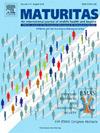The uterus debate in vaginal native tissue repair for pelvic organ prolapse: Hysteropexy versus hysterectomy – A systematic review and meta-analysis
IF 3.6
2区 医学
Q2 GERIATRICS & GERONTOLOGY
引用次数: 0
Abstract
Introduction
Pelvic organ prolapse is a common condition with significant impact on women’s quality of life. Following restrictions on transvaginal mesh, native tissue repair has re-emerged as the mainstay of vaginal prolapse surgery. The role of hysterectomy in apical prolapse repair remains debated, with uterus-preserving techniques proposed as less invasive alternatives.
Methods
We conducted a systematic review and meta-analysis according to PRISMA guidelines (PROSPERO CRD420251132469). Studies comparing vaginal hysterectomy with sacrospinous or uterosacral hysteropexy in native tissue repair were included. Primary outcomes were apical recurrence, global anatomical success, subjective success, and reoperation rates. Secondary outcomes included operative time, blood loss, hospital stay, and major complications. Random-effects models were used for statistical pooling.
Results
Sixteen studies involving 2544 women (1364 hysterectomy, 1180 hysteropexy) were analyzed. Pooled results showed no significant difference between hysterectomy and hysteropexy for apical recurrence (OR 0.60, 95 % CI 0.30–1.19), global anatomical success (OR 1.33, 95 % CI 0.88–2.02), subjective success (OR 0.92, 95 % CI 0.63–1.34), or reoperation rates (OR 1.04, 95 % CI 0.56–1.96). Similarly, no difference was observed in major complications (Clavien-Dindo ≥ III). However, hysterectomy was associated with longer operative time (+29 min), greater blood loss (+80 mL), and longer hospital stay (+1.1 days.
Conclusions
In vaginal native tissue repair for pelvic organ prolapse, hysterectomy and hysteropexy provide comparable anatomical and functional outcomes, as well as similar safety and reintervention rates. Hysteropexy appears advantageous in reducing perioperative morbidity and resource use, supporting its role as an effective, uterus-preserving alternative to hysterectomy.
阴道原生组织修复盆腔器官脱垂的子宫争论:子宫切除术与子宫切除术-系统回顾和荟萃分析
盆腔器官脱垂是一种常见的疾病,严重影响女性的生活质量。随着经阴道补片的限制,自然组织修复已重新成为阴道脱垂手术的支柱。子宫切除术在根尖脱垂修复中的作用仍然存在争议,保留子宫的技术被认为是侵入性较小的替代方法。方法根据PRISMA指南(PROSPERO CRD420251132469)进行系统评价和荟萃分析。比较阴道子宫切除术与骶棘或子宫骶部子宫切除术在自然组织修复中的应用的研究包括在内。主要结果是根尖复发、整体解剖成功、主观成功和再手术率。次要结局包括手术时间、出血量、住院时间和主要并发症。随机效应模型用于统计池化。结果共纳入16项研究2544例,其中子宫切除术1364例,子宫切除术1180例。汇总结果显示子宫切除术和子宫切除术在根尖复发(OR 0.60, 95% CI 0.30-1.19)、整体解剖成功(OR 1.33, 95% CI 0.88-2.02)、主观成功(OR 0.92, 95% CI 0.63-1.34)或再手术率(OR 1.04, 95% CI 0.56-1.96)方面无显著差异。同样,在主要并发症(Clavien-Dindo≥III)方面也没有观察到差异。然而,子宫切除术与较长的手术时间(+29分钟)、较大的出血量(+80 mL)和较长的住院时间(+1.1天)相关。结论阴道自体组织修复盆腔器官脱垂,子宫切除术和子宫切除术的解剖和功能效果相当,安全性和再干预率相似。子宫切除术在减少围手术期发病率和资源使用方面具有优势,支持其作为子宫切除术的有效选择,保留子宫。
本文章由计算机程序翻译,如有差异,请以英文原文为准。
求助全文
约1分钟内获得全文
求助全文
来源期刊

Maturitas
医学-妇产科学
CiteScore
9.10
自引率
2.00%
发文量
142
审稿时长
40 days
期刊介绍:
Maturitas is an international multidisciplinary peer reviewed scientific journal of midlife health and beyond publishing original research, reviews, consensus statements and guidelines, and mini-reviews. The journal provides a forum for all aspects of postreproductive health in both genders ranging from basic science to health and social care.
Topic areas include:• Aging• Alternative and Complementary medicines• Arthritis and Bone Health• Cancer• Cardiovascular Health• Cognitive and Physical Functioning• Epidemiology, health and social care• Gynecology/ Reproductive Endocrinology• Nutrition/ Obesity Diabetes/ Metabolic Syndrome• Menopause, Ovarian Aging• Mental Health• Pharmacology• Sexuality• Quality of Life
 求助内容:
求助内容: 应助结果提醒方式:
应助结果提醒方式:


